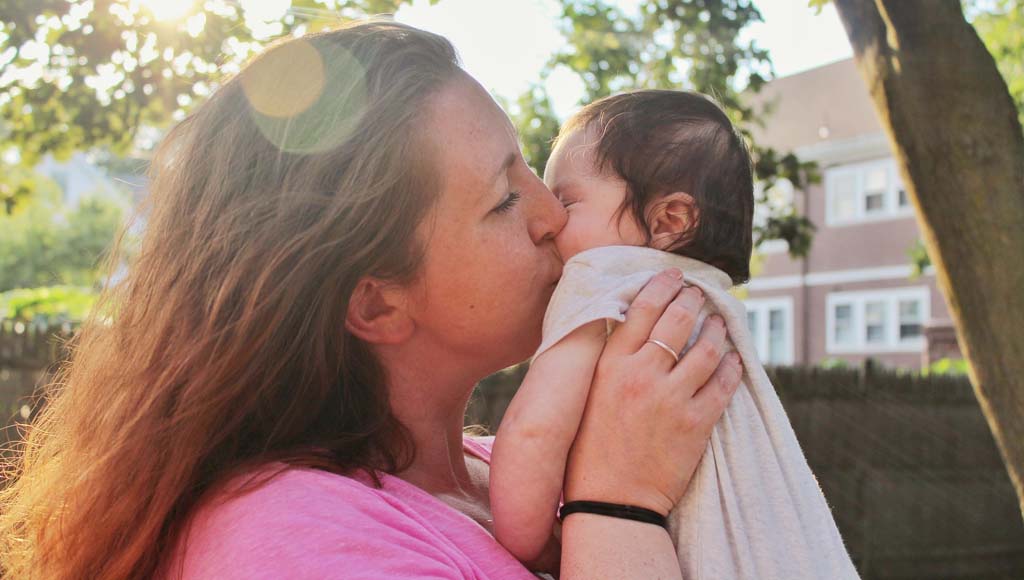Definition
- A child less than 90 days of age has the sudden onset of unexplained crying
- Crying is the only symptom
- The younger the child, the harder it is to identify the cause of the crying
Causes
- Common causes of new crying: hunger, sleepy, pain, too cold, too hot, clothing too tight
- Main cause of recurrent crying: normal fussy crying. When this occurs over 3 hours/day, it’s called colic.
- Gas does not cause crying. All crying babies pass lots of gas and their intestines make lots of gassy noises. The gas comes from swallowed air. The gas is normal and it does not become trapped nor cause any pains.
Definition of Colic
- Excessive crying once or twice per day
- Usually consolable when held and comforted
- Acts normal (happy, contented) between bouts of crying
- The baby is getting enough to eat and is not hungry
- The baby is not sick
- Onset usually before 2 weeks of age
- Usually resolves by 3 months of age (occasionally 4 months)
When to Call
Call 911 Now (your child may need an ambulance) If
- Not moving or very weak
Call Your Doctor Now (night or day) If
- Your child looks or acts very sick
- Age under 1 month and looks or acts abnormal in any way
- Age under 12 weeks with fever above 100.4° F (38° C) rectally (Caution: Do NOT give your baby any fever medicine before being seen)
- Low temperature below 96.8° F (36.0° C) rectally that doesn’t respond to warming
- Injury suspected
- Pain suspected as cause of crying
- Bulging or swollen soft spot
- Swollen scrotum
- Vomiting
- You are afraid you or someone might hurt or shake your baby
- Your baby cannot be comforted after trying this advice for 2 hours
Call Your Doctor Within 24 Hours (between 9 am and 4 pm) If
- You think your child needs to be seen
- New onset of intermittent crying and persists over 4 hours
- Not gaining weight or seems hungry
- You are exhausted from all the crying
Call Your Doctor During Weekday Office Hours If
- You have other questions or concerns
- Your baby has never been examined for excessive crying
- Crying began after 1 month of age
- Crying occurs 3 or more times per day
Parent Care at Home If
- Normal crying or colic and you don’t think your child needs to be seen
Care Advice
-
Reassurance:
- Normal Crying: All babies cry when they are hungry. In addition, the average baby has 1 to 2 hours of unexplained crying scattered throughout the day. As long as they are happy and content when they are not crying, this is normal.
- Colic: Some babies cry excessively (over 3 hours/day) or are very difficult to comfort. If they are growing normally and have a normal medical exam, the crying is called colic. Remind yourself that colic is due to brain immaturity and has nothing to do with your parenting or any medical disease.
- Feedings: Feed your baby, if more than 2 hours since the last feeding (1½ hours for breast fed).
-
Hold and Comfort:
- Hold and try to calm your baby whenever he cries without a reason. The horizontal position is usually best for helping a baby relax and go to sleep.
- Rock your child in a rocking chair, in a cradle or while standing. (Many babies calm best with rapid tiny movements like vibrations)
- Place in a windup swing or vibrating chair.
- Take for a stroller ride, outdoors or indoors.
- Do anything else you think may be comforting (such as a pacifier, massage, or warm bath).
- Caution: Avoid baby slings before 4 months of age because they have caused suffocation in some babies. (AAP 2010)
-
Swaddle your Baby in a Blanket:
- Swaddling is the most helpful technique for calming crying babies.
- It also prevents awakenings caused by the startle reflex.
- Use a big square blanket and the “burrito-wrap” technique:
- Step 1: Have the arms straight at the sides.
- Step 2: Pull the left side of the blanket over the upper body and tuck.
- Step 3: Fold the bottom up with the knees a little flexed.
- Step 4: Pull the right side over the upper body and tuck.
- Don’t cover your baby’s head or overheat your baby.
- Best resource on how to calm fussy babies: the book or DVD entitled “The Happiest Baby on the Block” by Dr. Harvey Karp.
-
White Noise:
- Swaddling works even better when paired with a white noise on a loud volume. Examples are a CD, vacuum cleaner, fan or other monotonous sound.
- Keep the white noise on any time your baby is crying.
- When your baby is awake and not crying, keep your baby unwrapped and turn off the white noise. (Reason: so she can get used to the normal sounds of your home). (For details, view Dr. Karp’s DVD.)
-
Cry to Sleep:
- If you can’t stop the crying and your baby is not hungry, let your baby cry himself to sleep.
- For some overtired babies, this is the only answer.
- Swaddle your baby snugly, place him on his back in his crib, turn on some white noise, and leave the room.
- If more than 3 hours have passed since the last nap, you can be sure your baby needs to sleep.
-
Encourage Nighttime Sleep (Rather Than Daytime Sleep):
- Try to keep your child from sleeping excessively during the daytime.
- If your baby has napped 2 hours or longer, gently awaken him. Play with or feed your baby, depending on his needs. This will help to reduce the amount of time your baby is awake at night.
- Warning: Never shake a baby. It can cause bleeding on the brain and severe brain damage. Also never leave your baby with anyone who is immature or has a bad temper. If you are frustrated, put your baby down in a safe place and get help.
- Expected Course: Once you find the right technique, the crying should decrease to 1 hour per day. Colic improves after 2 months of age and is usually gone by 3 months.
-
Call Your Doctor If:
- Your baby starts to look or act abnormal
- Cries constantly over 2 hours using this advice
- Cannot be comforted using this advice
- Your child becomes worse
And remember, contact your doctor if your child develops any of the “Call Your Doctor” symptoms.
To find a pediatrician.
Disclaimer: This information is not intended to be a substitute for professional medical advice. It is provided for educational purposes only. You assume full responsibility for how you choose to use this information.




